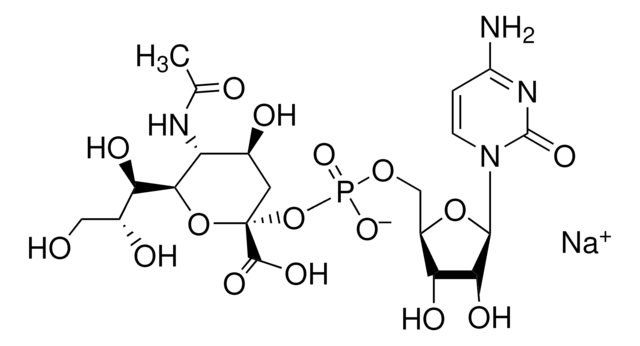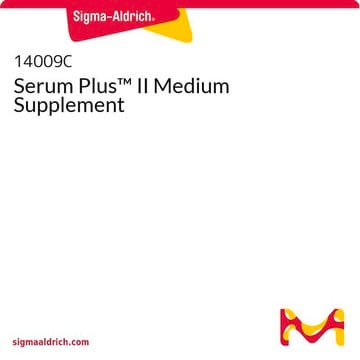The difference between the Type I and Type II Asialofetuin products does not represent any kind of biochemical or functional difference. These indicate different methods of production and purification. The Type II option, product A1908, utilizes neuraminadase in an enzymatic cleavage step. The Type I, product A4781, utilizes a proprietary modification of that described in Spiro, R.G., J. Biol. Chem., 235, 2860 (1960).
A1908
Asialofetuin from fetal calf serum
Type II (Sigma designation)
Scegli un formato
About This Item
Prodotti consigliati
Origine biologica
bovine
Tipo
Type II (Sigma designation)
Stato
powder
tecniche
activity assay: suitable
inhibition assay: suitable
Impurezze
salt, essentially free
≤1.0% N-acetylneuraminic acid
Solubilità
H2O: soluble 1.0 mg/mL, clear to hazy, colorless to very faintly yellow
Temperatura di conservazione
2-8°C
Cerchi prodotti simili? Visita Guida al confronto tra prodotti
Applicazioni
Azioni biochim/fisiol
Nota sulla preparazione
Codice della classe di stoccaggio
11 - Combustible Solids
Classe di pericolosità dell'acqua (WGK)
WGK 3
Punto d’infiammabilità (°F)
Not applicable
Punto d’infiammabilità (°C)
Not applicable
Dispositivi di protezione individuale
Eyeshields, Gloves, type N95 (US)
Scegli una delle versioni più recenti:
Certificati d'analisi (COA)
Non trovi la versione di tuo interesse?
Se hai bisogno di una versione specifica, puoi cercare il certificato tramite il numero di lotto.
Possiedi già questo prodotto?
I documenti relativi ai prodotti acquistati recentemente sono disponibili nell’Archivio dei documenti.
-
What is the difference in Type 1 versus Type II asialofetuin?
1 answer-
Helpful?
-
Active Filters
Il team dei nostri ricercatori vanta grande esperienza in tutte le aree della ricerca quali Life Science, scienza dei materiali, sintesi chimica, cromatografia, discipline analitiche, ecc..
Contatta l'Assistenza Tecnica.








